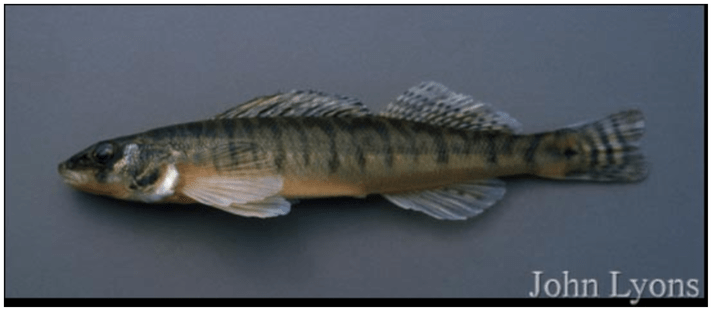Key Characteristics:
- Can see teeth at a young age (jaws and teeth developed by 6-7 mm)
- Myomere Totals: 37-38
- Single subsurface chromatophores below base of pectoral fin
- Few chromatophores apparent over swim bladder
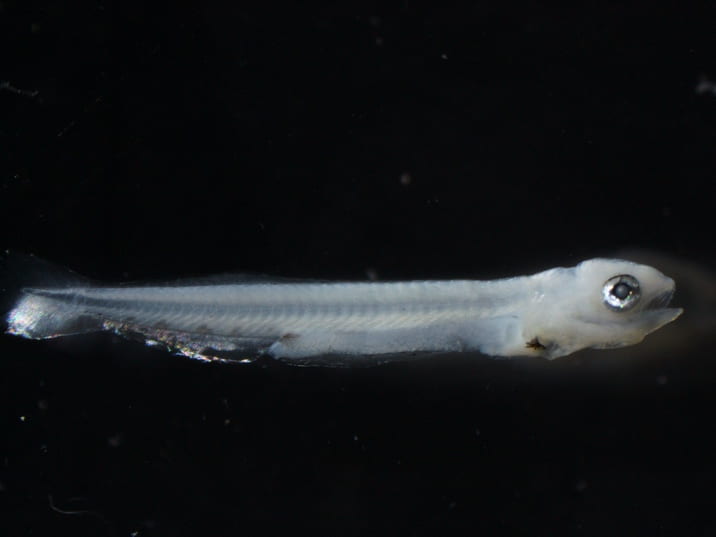
Larval Logperch. United States Fish Wildlife Service. Marian Shaffer. 2017.
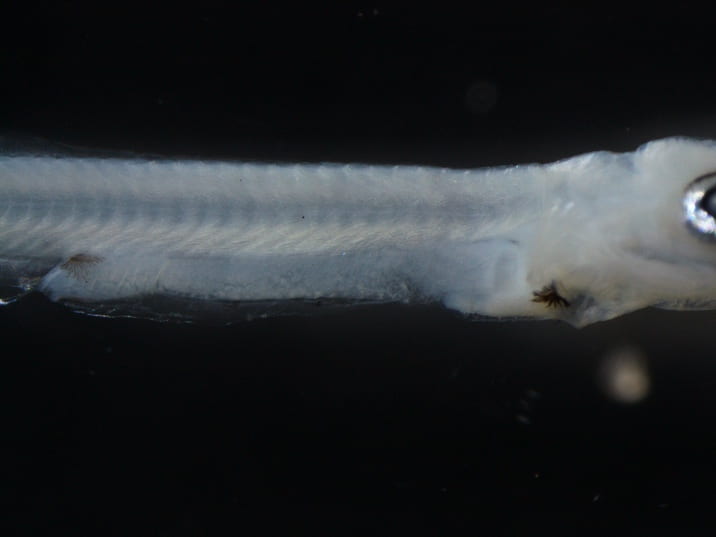
Larval Logperch. United States Fish Wildlife Service. Marian Shaffer. 2017.
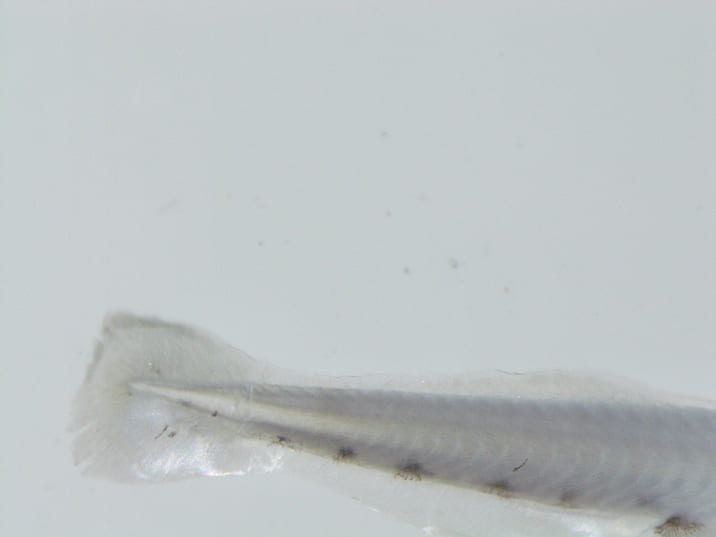
Larval Logperch. United States Fish Wildlife Service. Marian Shaffer. 2017.
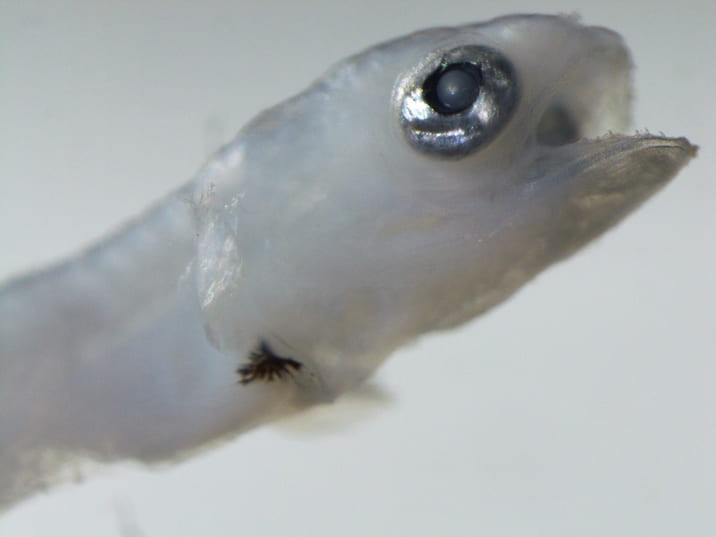
Larval Logperch. United States Fish Wildlife Service. Marian Shaffer. 2017.
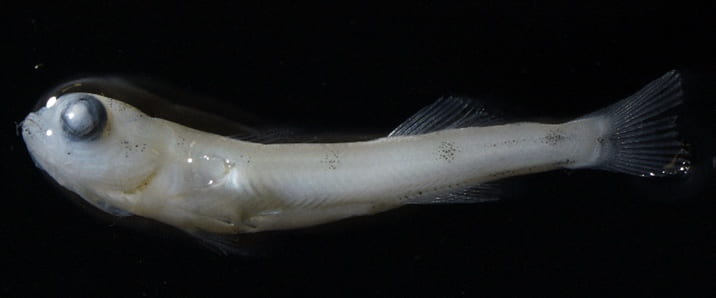
Larval Logperch. United States Fish Wildlife Service. Marian Shaffer. 2017.
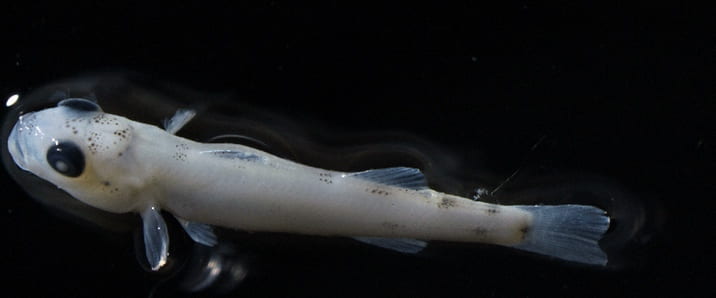
Larval Logperch. United States Fish Wildlife Service. Marian Shaffer. 2017.
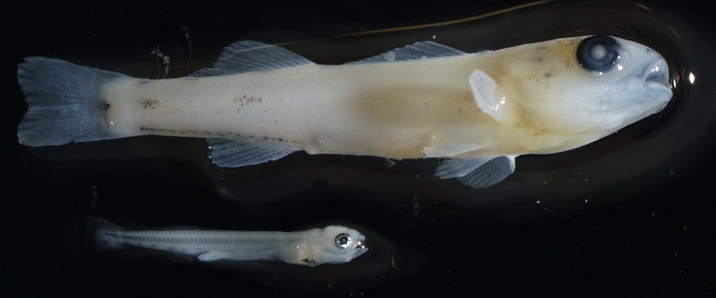
Larval Logperch. United States Fish Wildlife Service. Marian Shaffer. 2017.
- Body not elongated, eel-shaped, round in transverse section, uniformly pigmented (1B)
- Chin barbels absent (3B)
- Snout short, its length usually less than 10% TL; median fins otherwise (5B)
- Median fins or finfolds showing distinct separation (7B)
- No adipose fin, or demarcation of one, in finfold (10B)
- Preanal myomeres greater than or equal to postanal myomeres (14A)
- Preanal myomeres approximately equal to postanal myomeres (difference five myomeres or less) (15A)
- Total myomeres greater than or equal to 35 (20A)
- Percidae – Perches
Adult History (1, 2, 3, 6, & UW – SG)
- Physical Description
- Subterminal mouth, no canine teeth, toothed scales between pelvic fins, 15-25 thin black vertical bars along the side (zebra or tiger like), 71-79 ctenoid lateral scales, dorsal fin with 2 lobes (separated), and dusky bands on dorsal fins (13-15 spines)
- Spawning Habitat
- Over the bottom of rivers, streams, ponds, or lakeshores
- 10-30 cm deep
- Swiftly moving water
- Over the bottom of rivers, streams, ponds, or lakeshores
- Spawning Substrate
- Eggs are deposited or buried in either gravel or sand
- Creates a pit
- Eggs are deposited or buried in either gravel or sand
- Spawning Behavior
- Polygynandry Behavior
- Parents do not guard their eggs or build a nest
- Females do bury their eggs after they are scattered
- Courtship behaviors
- Males must compete with other males
- Develop a bright orange band long their first dorsal fin during mating season
- Lake Spawning: Spawn in Schools
- Stream Spawning: Males have shown guarding towards their female and not their particular area
- Time of Year
- April – June in Great Lake Basin
- Spawning typically takes place at water temperatures of 50 – 60°F
- Diet
- Crustaceans, zooplankton, aquatic insects, snails, water-fleas, leeches, and fish eggs

